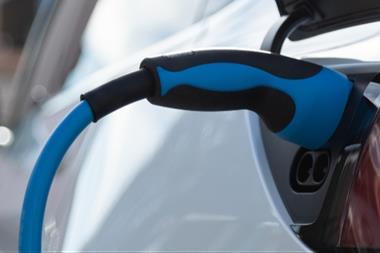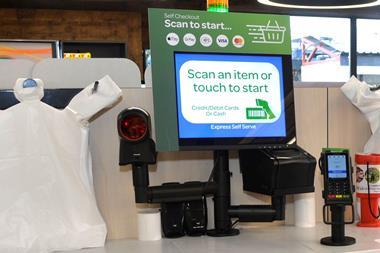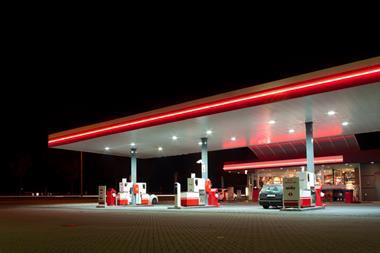Is the future miles away?
Discuss: is it worth investing six-figure sums in developing your site or should you sit back and wait for the surely soon-to-be-annnounced mass market in electric cars?
This was the question posed by Yusuf Dalli who runs Bury Rd Station in Prestwich, Manchester. "When we go to these Texaco meetings and hear people say ’I’m investing £550,000 in my site and it will be 10 years before I get my money back’ I wonder what happens if electric cars are here in two years time? There’s not enough information."
Or possibly, there is the wrong kind of information. As we know there are questions over recharging stations and the bulky weight of batteries. LPG, as another alternative, also removes carrying capacity and hybrids are still at pardon pun the crude stage.
There are no end of headlines. I explored one myself in the January issue with researchers from academies of higher learning developing a wave disk engine and electricity generator that promises to be five times more efficient than traditional auto engines in electricity production, 20% lighter, and 30% cheaper to manufacture. About the size of a large cooking pot, it could replace current back-up generator technology of plug-in hybrid electric vehicles, get 500 miles out of one tank of fuel and be ready for market in two years, goes the theory.
Here’s another one. At General Motors’ testing lab in Warren, Michigan, is a relatively trim battery that will squeeze into the body of the compact Chevy Volt which GM plans to start producing this year.
And in June 2009 the UK government launched the world’s largest trial of electric and low-carbon vehicles, announcing plans to roll out 340 cars across eight cities as part of an initiative designed to assess the viability of emerging electric car technologies.
The largest trial includes Mercedes-Benz making 100 of its electric Smart cars available to drivers in the West Midlands and London; BMW rolling out 40 of its Mini Es in Oxford and the South East; and Peugeot making 40 of its new eExpert Teepee electric cars available in Glasgow.
The trials are accompanied by charging infrastructure to assess how recharging stations will need to be distributed to support the new vehicles. A wider trial, involving up to 8,000 cars, is planned within the next few years.
So, is this particular bit of future on our threshold? I thought who better to ring than Brian Madderson, new chairman of the restructured RMIP (previously the PRA). He believes that the takeover by non-fuel vehicles "is miles away". He adds: "We’ve got 20 million fossil-fuelled cars in this country alone they’re not going to be replaced in our lifetime."
He pointed me to a very interesting University of Oxford study which accused the car giants of giving false hope of an emission-free future in order to continue profiting from large, fuel-hungry vehicles. The study says that cars powered by hydrogen fuel cells are not expected to be widely available until after 2050 because of the high cost of the platinum in their catalysts. Battery-powered vehicles will also remain a niche product because of their limited battery life.
There are only a few hundred fuel cell vehicles on the roads today and car companies have given them to celebrities in order to maximise publicity.
The study calls the existing fuel cell cars a ’marketing gimmick’. The manufacturers’ argument is that people can continue to drive 4X4s because, in a couple of years, they will be able to switch to a fuel cell 4X4. The study doesn’t think this will happen and adds that we must instead reduce fuel consumption by going for lighter, smaller cars. It further concludes that road transport will continue to rely on the internal combustion engine with electric vehicles remaining a small percentage of the overall fleet composition up to the medium- to long-term.
There’s a lot more information where that came from. If you want this discussion to continue, please do get in touch.
Footfall: does it add up?
In my last column I said I would bring you Paypoint’s side of the footfall argument (robustly argued against by an anonymous reader who was threatening to charge customers a transaction fee to make it all worthwhile).
Paypoint says its research shows that 78% of retailers believe the service brings in additional footfall. "It doesn’t suggest how much they spend," adds spokesman Peter Brooker, "although we do know from independent research that the average utility bill payment shopper spends £8.61 (excluding the bill payment) per visit compared to the average convenience shopper who spends £5.10 (a 69% extra spend).
Over an average week, with 4.9 visits by utility bill payment shoppers against 3.2 visits by the average convenience shopper, the difference amounts to £42.19 versus £16.39 or 157% more.
As these are average figures, there will always be some Paypoint customers who don’t buy anything else but these are compensated by others with a higher basket size.
"The research also said that only 18% of visits to a c-store are primarily to pay a bill at Paypoint, which implies that customers making the other 82% of visits are going for another purpose. In many cases, they are choosing that store because they can use Paypoint at the same time."
Peter paints a scenario where someone plans a visit to a neighbourhood store but then elects to travel a bit further to the Spar, say, so they can top up the gas meter at the same time.






























No comments yet